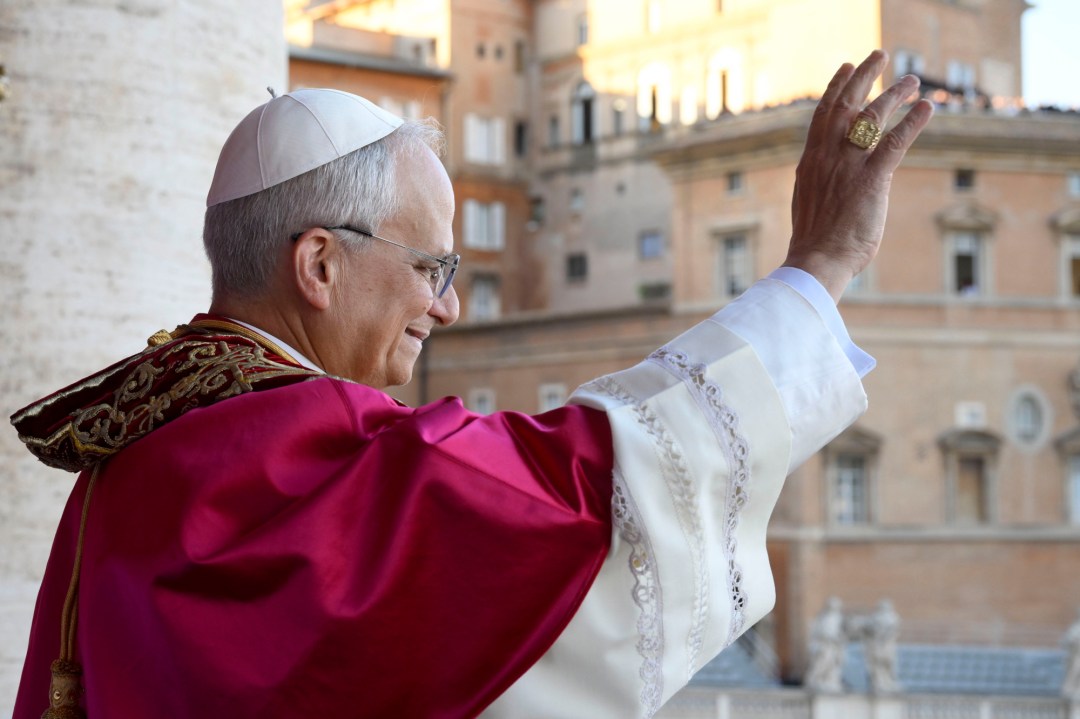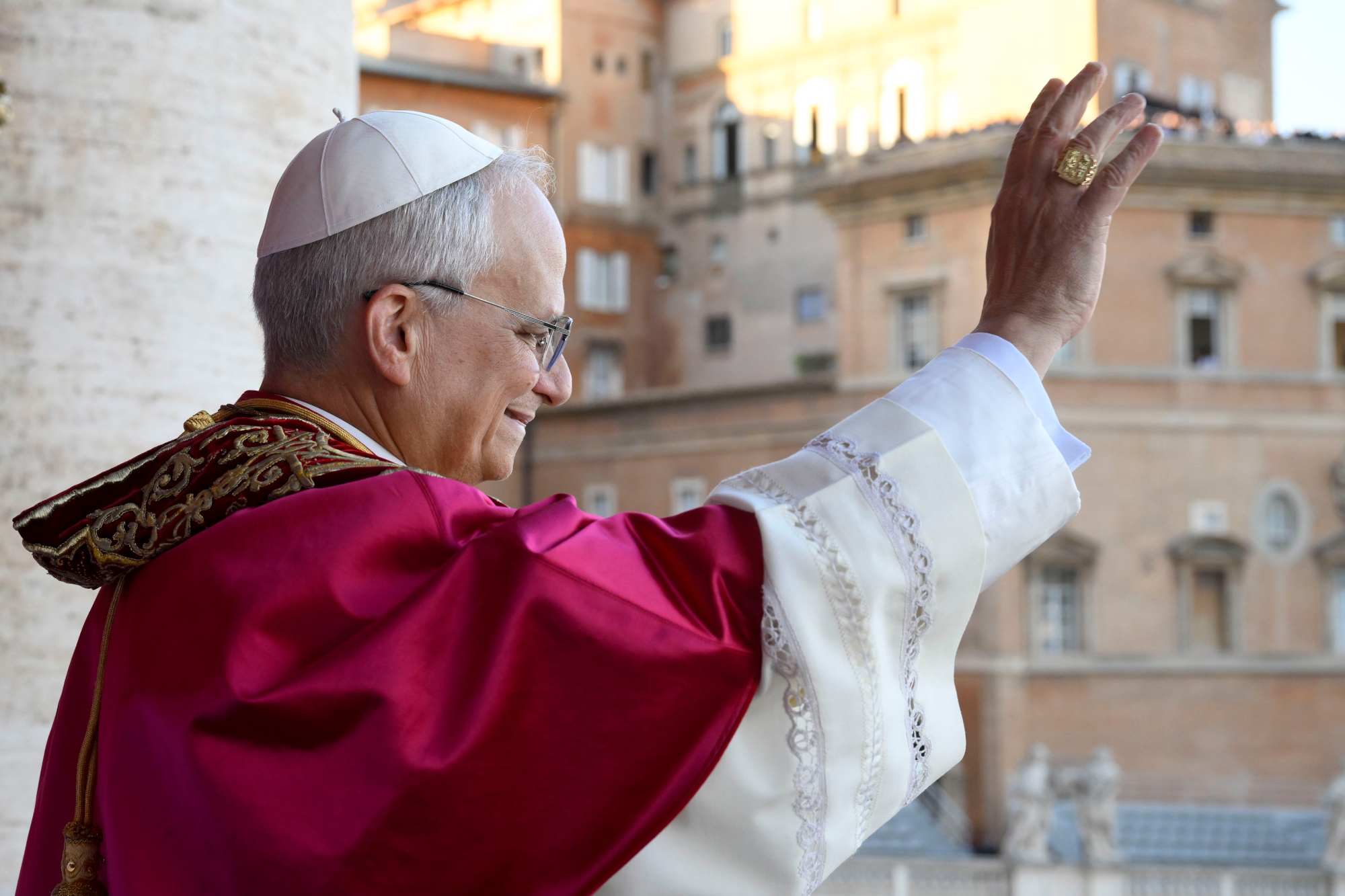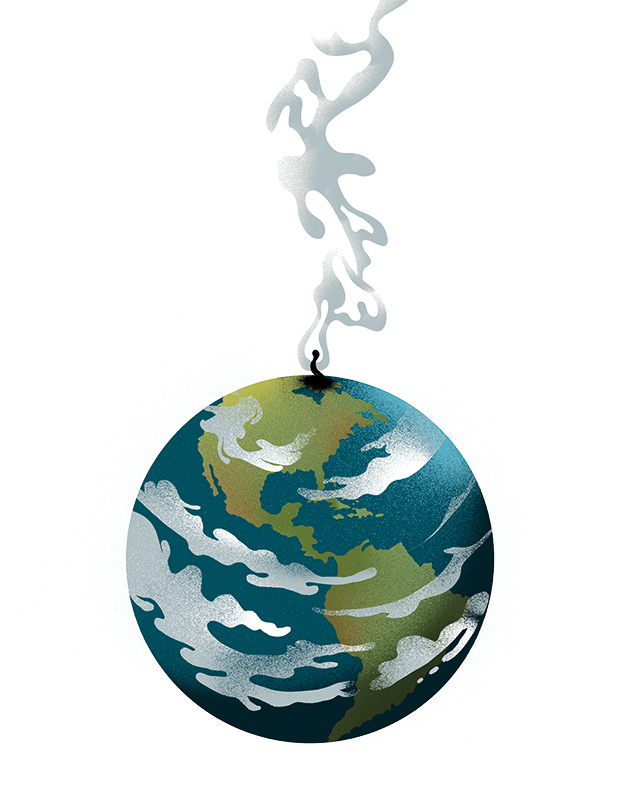Around 40,000 people gathered in St Peter’s Square last night, the mood markedly more expectant than the evening before. While Wednesday had felt like a formality destined to disappoint, Thursday hummed with anticipation – and it delivered.
The general consensus in the run-up to the conclave was that an American pope was unlikely. As the world’s strongest economic and political power, adding to that the honour of hosting the world’s most influential spiritual leader seemed excessive. The United States has also had the furthest to go in addressing the problem of clerical abuse. The ghost of the serial sexual predator Cardinal Theodore McCarrick has not yet been fully exorcised, and the Church still appears to be under reconstruction after its credibility was demolished by countless scandals.
Leo may help bring disaffected English-speaking Catholics back into the fold – particularly Americans, many of whom have felt alienated over the past decade of Church politics
Robert Barron, the bishop of the diocese of Winona–Rochester, who has become something of an internet personality in recent years, summed up the papal pundits’ consensus on an American pontiff in an interview with EWTN. When asked whether it was a possibility, he said: ‘My basic answer is no.’
However, at around 7.15 p.m. local time, the crowds at St Peter’s were treated to their first glimpse of the American Cardinal Robert Francis Prevost – from then on to be known as Pope Leo XIV – the 267th leader of the Roman Catholic Church.
There was some confusion over who exactly had been announced. My American friends did not recognise the name, and the Paraguayan mother and daughter next to me confidently said he was a Russian – which, even at the time, seemed unlikely. What was clear from the beginning was the name Leo XIV had been chosen.
That, in and of itself, was already an indication of the pontificate ahead. There have been popes named Leo since the fifth century, beginning with Pope Leo the Great – the first pontiff to be given, by general consensus among historians and theologians, the posthumous title ‘the Great’. Leos were particularly prevalent in the tenth century, when four reigned, but the name has otherwise appeared sporadically through the centuries. Recent popes have tended towards the novel, with two of the previous four choosing names never previously used.
The name naturally evokes the most recent Leo, Pope Leo XIII. Born in 1810, he is thought to be the earliest-born person ever captured on film. His pontificate spanned two centuries, beginning in 1878 and ending with his death in 1903. His 1891 encyclical Rerum Novarum is widely credited as the formal foundation of Catholic Social Teaching. It criticised both unfettered capitalism and socialism, championed the rights of workers, and affirmed the right to private property.
The papal name Leo conveys a sense of continuity, combined with a readiness to address the needs of the age.
After the initial confusion, it was eventually confirmed that the new pope was indeed Cardinal Prevost, prefect of the Dicastery for Bishops.
Prevost, an Augustinian friar, follows a Jesuit. This marks the first time since 1294 that the Church has had two consecutive popes from religious orders, rather than diocesan priests. Given that Pope Francis was the first order priest in almost 200 years, this suggests a new openness to this ecclesiastical path.
Born in Chicago, much has already been made of Prevost’s nationality. Donald Trump almost immediately took to his social media platform to say what ‘a Great Honor for our Country. I look forward to meeting Pope Leo XIV.’
Yet the Italian newspaper La Repubblica called him ‘the least American of the Americans’ – and it is easy to see why. Prevost spent much of his ministry in South America and has more recently been based in Rome. He joined his congregation as a missionary priest in Peru in 1985, held various leadership roles within the Augustinians – including Prior General – and was appointed Bishop of Chiclayo in 2014. In 2015 he became a Peruvian citizen and in 2023, Pope Francis brought him to Rome to lead the Dicastery for Bishops.
We will never know the exact reasons the cardinals chose Prevost. Those who witness the conclave are bound to secrecy under pain of excommunication, and the thus far impenetrable Vatican security measures have kept journalists out.
But we may speculate on the advantages his election brings. Prevost is an international man and a unifying presence in a Church divided. He has remained firm on Catholic doctrine, from female ordination to gender ideology. Yet in a Francis-like tone, he has also criticised both J. D. Vance and Trump for their immigration policies. His most recent post on X took aim at the US deportation of Kilmar Ábrego García to El Salvador. He also added three women to the voting bloc that decides which bishop nominations to forward to the pope, a revolutionary move.
He may also help bring disaffected English-speaking Catholics back into the fold – particularly Americans, many of whom have felt alienated over the past decade of Church politics. Catholics in the US tend to take their faith seriously, observe doctrine, and give generously. Excluding them from a Church that is struggling for relevance in the West is short-sighted.
The smiling face of an American pope – deeply formed by Latin America and wearing once more the papal regalia set aside by Francis – is, for many, welcome news. While the odds on Prevost were long, one cannot help but think the cardinals knew exactly what they were doing. After weeks of speculation and conflicting forecasts from pundits and Vaticanisti, their choice now appears, in hindsight, an exceptionally wise one.








Comments